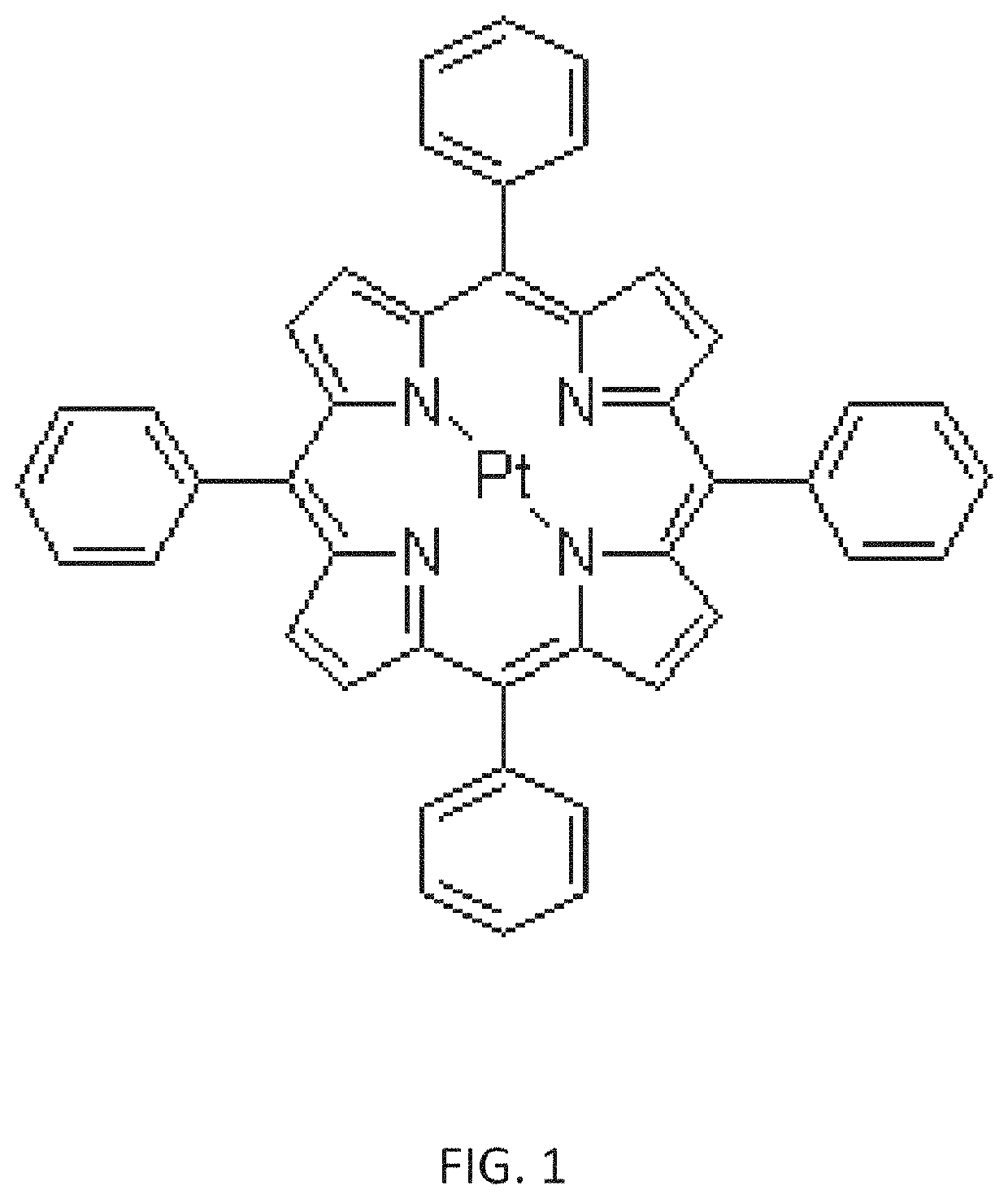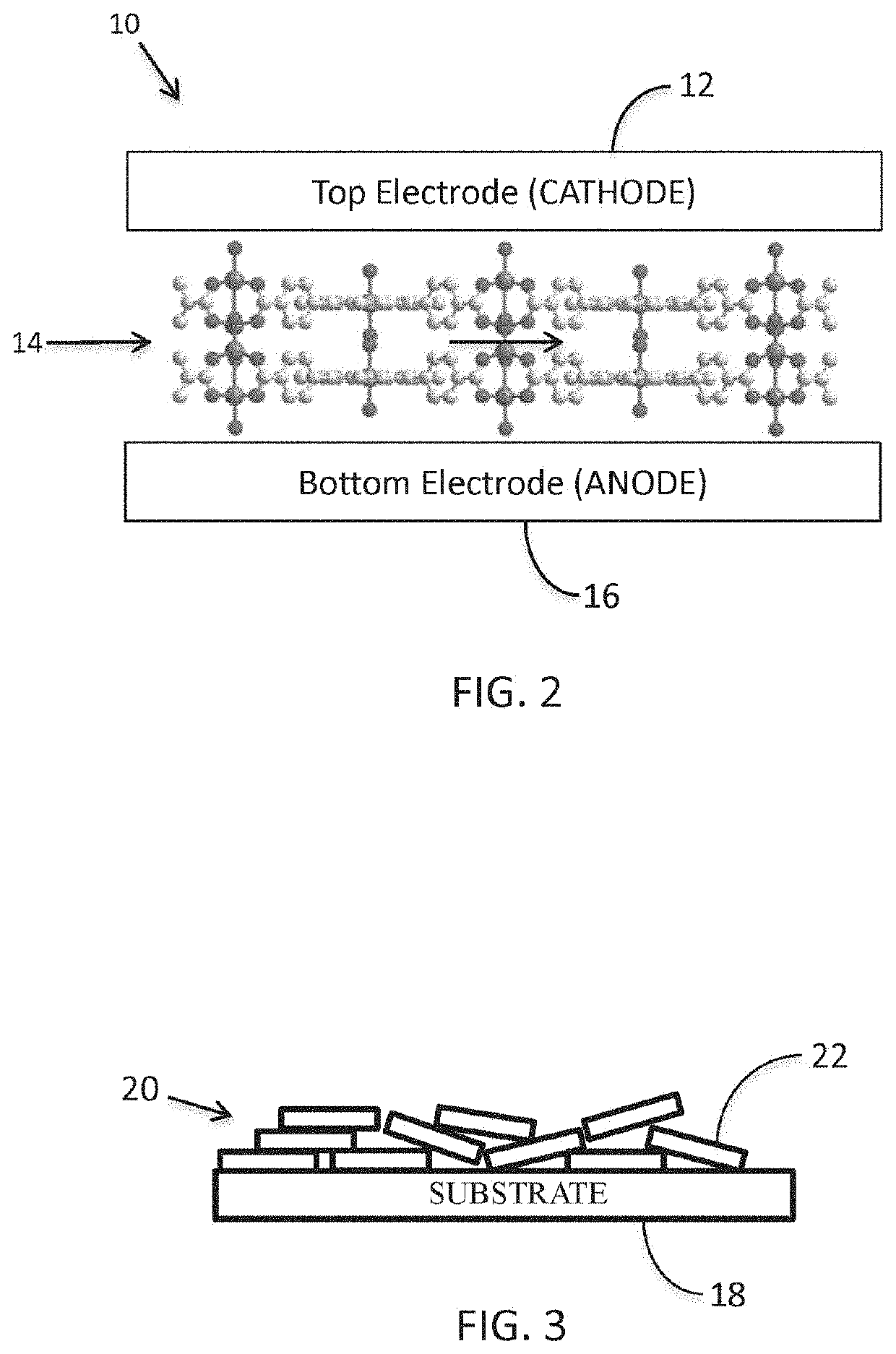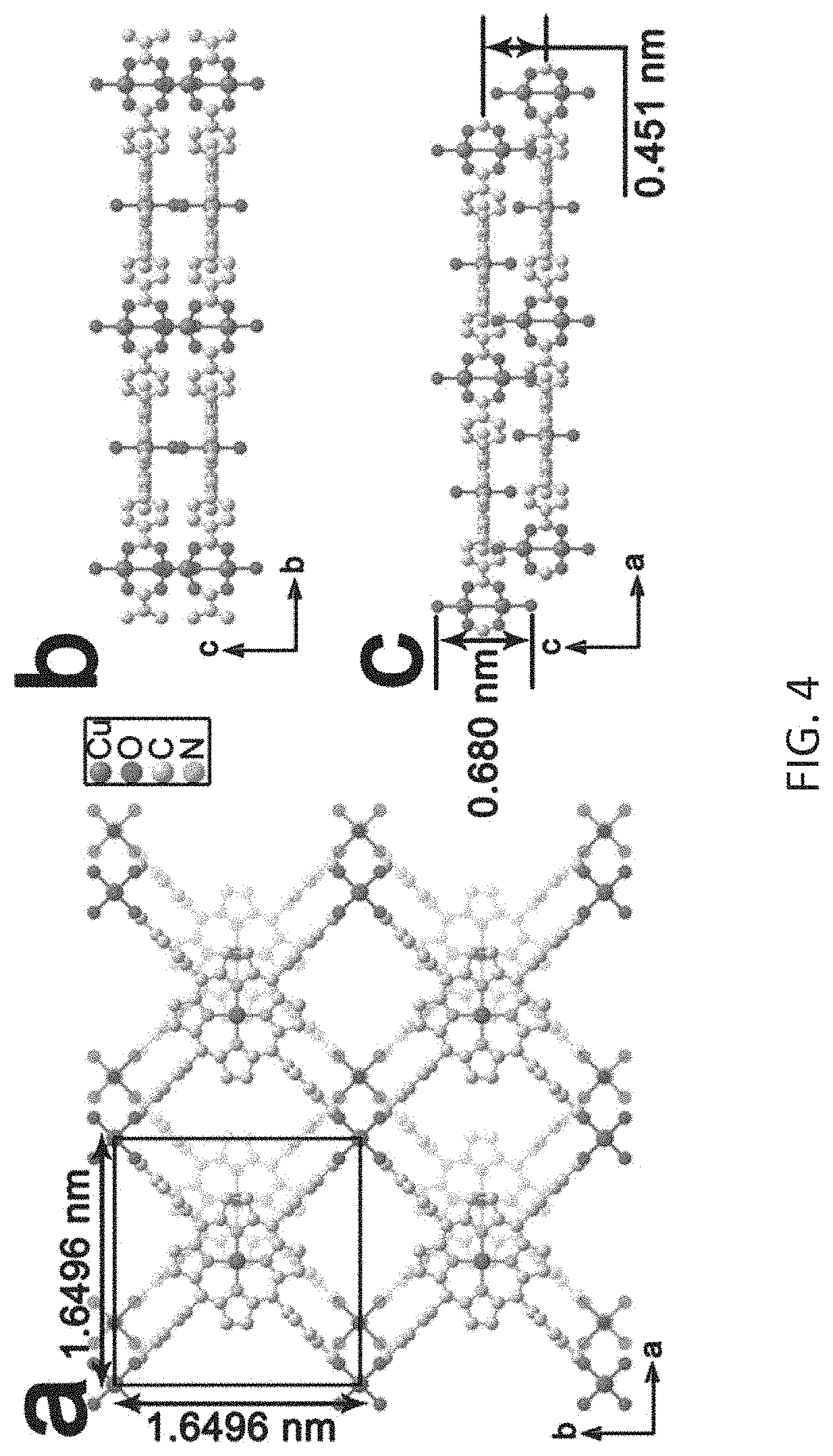Crystalline film and lighting-emitting device having oriented luminescent emitters
- Summary
- Abstract
- Description
- Claims
- Application Information
AI Technical Summary
Benefits of technology
Problems solved by technology
Method used
Image
Examples
example 1
and Methods for Fabricating Cu2(TCPP) Film
[0176]Copper nitrate trihydrate (7 mg) and 5,10,15,20-tetrakis(4-carboxyphenyl)porphyrin] (TCPP, 30 mg) are dissolved in a solution of 1.5 mL diethylformamide and 0.5 mL ethanol. The resulting solution is sealed in a glass vial and placed in an oven. The oven is heated to 80° C. over a period of 30 minutes and held at 80° C. for a period of 12 hours. The oven is then cooled at a rate of 5° C. / hour to room temperature. The resulting solution is centrifuged. The liquid contents are discarded and the red-brown solid, Cu2(TCPP), is redispersed in 2 mL methanol. The centrifugation process is repeated two times. The resulting solution is diluted in methanol to a desired concentration, which may be one tenth the starting concentration, and deposited as a thin film onto a substrate. Thin film deposition may proceed as follows: The dispersion of Cu2(TCPP) in methanol is pipetted dropwise onto the surface of water in a beaker. The MOF is observed to f...
PUM
 Login to View More
Login to View More Abstract
Description
Claims
Application Information
 Login to View More
Login to View More - R&D
- Intellectual Property
- Life Sciences
- Materials
- Tech Scout
- Unparalleled Data Quality
- Higher Quality Content
- 60% Fewer Hallucinations
Browse by: Latest US Patents, China's latest patents, Technical Efficacy Thesaurus, Application Domain, Technology Topic, Popular Technical Reports.
© 2025 PatSnap. All rights reserved.Legal|Privacy policy|Modern Slavery Act Transparency Statement|Sitemap|About US| Contact US: help@patsnap.com



